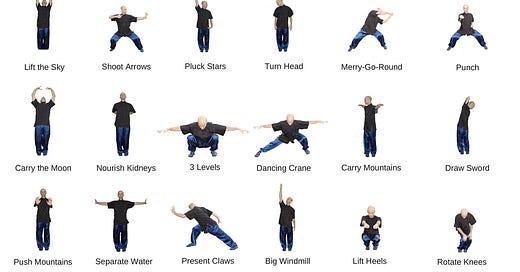Qigong - Moving with the Times
The spelling of Qigong belies its simplicity. It can be ‘googled’ and you will find Qigong, Qi Gong, Chi Gong and Qi Kung (the list continues!).
The spelling of Qigong belies its simplicity. It can be ‘googled’ and you will find Qigong, Qi Gong, Chi Gong and Qi Kung (the list continues!). The correct way of spelling the name of this gentle, yet often challenging, movement system remains a mystery; however the effects on our health and wellbeing are backed by a growing body of evidence. They are …
Keep reading with a 7-day free trial
Subscribe to Advantages of Age to keep reading this post and get 7 days of free access to the full post archives.



